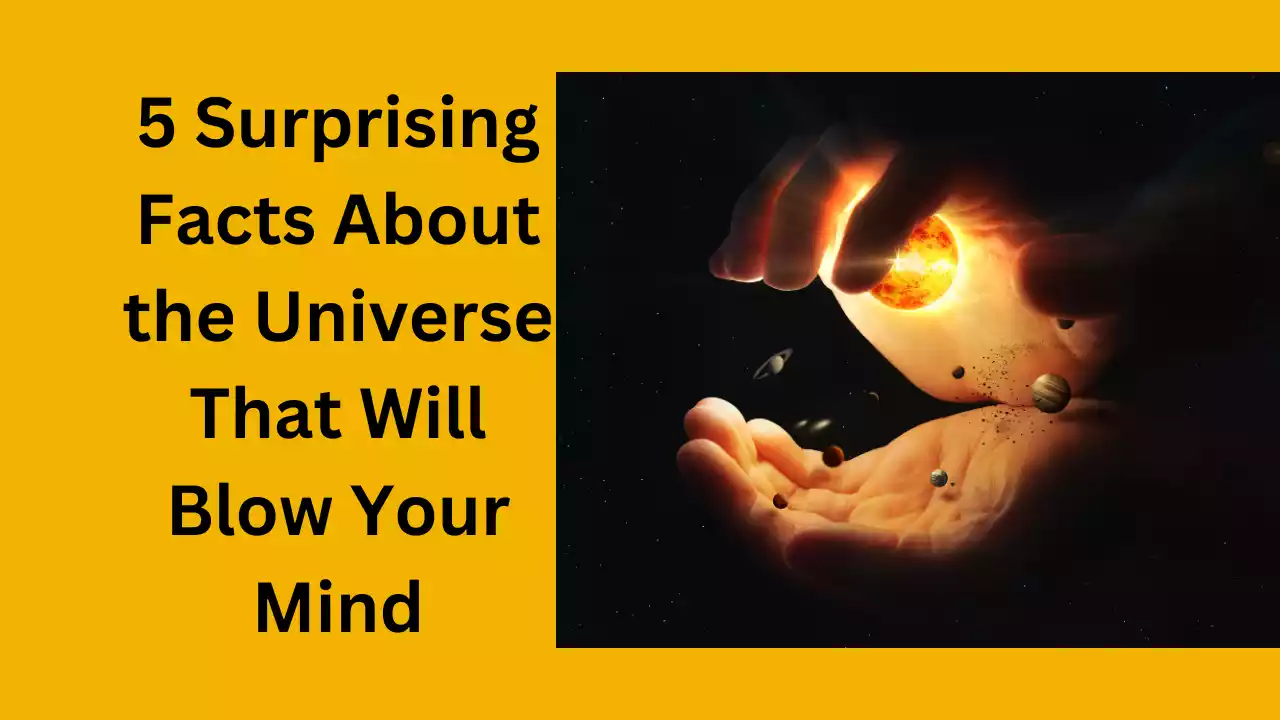The universe is a vast expanse of wonder, holding within its folds secrets that continue to captivate and astound us. From the smallest subatomic particles to the largest galaxies, the cosmos never fails to amaze with its complexity and beauty. Here, we delve into five surprising facts about the universe that will undoubtedly leave you in awe of its magnificence.

1. The Majority of the Universe is Invisible
One of the most astonishing revelations in modern astrophysics is that ordinary matter, the stuff of stars, planets, and people, makes up only a fraction of the universe’s composition. According to current estimates, approximately 68% of the universe consists of dark energy, and another 27% is dark matter. Dark energy, a mysterious force driving the accelerated expansion of the universe, remains largely elusive to scientific understanding. Dark matter, on the other hand, exerts gravitational influence but emits no light, rendering it invisible to traditional detection methods. The realization that the universe is predominantly composed of these enigmatic substances underscores the profound gaps in our comprehension of its true nature.
2. Time Slows Near Massive Objects
Albert Einstein’s theory of general relativity revolutionized our understanding of gravity, predicting that massive objects warp the fabric of spacetime. One mind-bending consequence of this theory is time dilation, wherein time flows differently in regions of varying gravitational strength. As objects with greater mass exert stronger gravitational pull, time passes more slowly in their vicinity. This phenomenon has been experimentally verified, with clocks aboard satellites ticking slightly faster than those on Earth’s surface due to the weaker gravitational field experienced in orbit. The realization that time itself is malleable, influenced by the distribution of matter and energy, challenges our intuitive notions of temporal progression.
3. Every Atom in Your Body Was Once Inside a Star
Consider this extraordinary fact: the atoms comprising your body, the very building blocks of life, originated from the nuclear furnaces of ancient stars. Elements heavier than hydrogen and helium, such as carbon, oxygen, and iron, are forged in the intense heat and pressure of stellar cores through nuclear fusion processes. When these stars reach the end of their life cycles and undergo supernova explosions, they disperse their enriched contents into the surrounding space. Subsequently, these stellar remnants seed the formation of new stars, planets, and ultimately, life itself. Thus, in a profound sense, we are all stardust, intricately connected to the cosmic tapestry of creation.
4. The Observable Universe is Expanding Faster Than the Speed of Light
The concept of cosmic expansion, initially proposed by Belgian astronomer Georges Lemaître and later corroborated by Edwin Hubble’s observations, fundamentally altered our perception of the universe’s structure and evolution. Notably, the expansion of space itself causes galaxies to recede from one another, with the distance between them increasing over time. While the speed of light represents the cosmic speed limit for objects traveling through space, there is no such constraint on the expansion of spacetime itself. Consequently, regions of the universe beyond a certain distance—referred to as the observable universe—are receding from us faster than the speed of light. This startling revelation underscores the vastness of the cosmos and the limitations of our ability to explore its most distant reaches.
5. Quantum Entanglement Suggests Instantaneous Connections Across Vast Distances
At the forefront of quantum mechanics lies the phenomenon of entanglement, wherein the properties of particles become intrinsically linked, regardless of the distance separating them. According to quantum theory, when two particles become entangled, measuring the state of one instantaneously influences the state of the other, regardless of the spatial separation between them. This eerie interconnectedness challenges classical notions of causality and implies the existence of hidden dimensions or communication channels beyond our current understanding. While the practical implications of quantum entanglement remain a subject of ongoing research, its implications for our conception of reality are profound, hinting at a deeper, more interconnected fabric underlying the universe’s tapestry.
Conclusion
The universe, with its boundless expanse and unfathomable mysteries, continues to inspire awe and wonder in the hearts and minds of humanity. From the invisible forces shaping cosmic evolution to the interconnectedness of all matter and energy, each revelation offers a glimpse into the profound intricacies of existence. As we peer ever deeper into the cosmos, may we remain humbled by the vastness of the unknown and perpetually curious in our quest to unravel its secrets.
